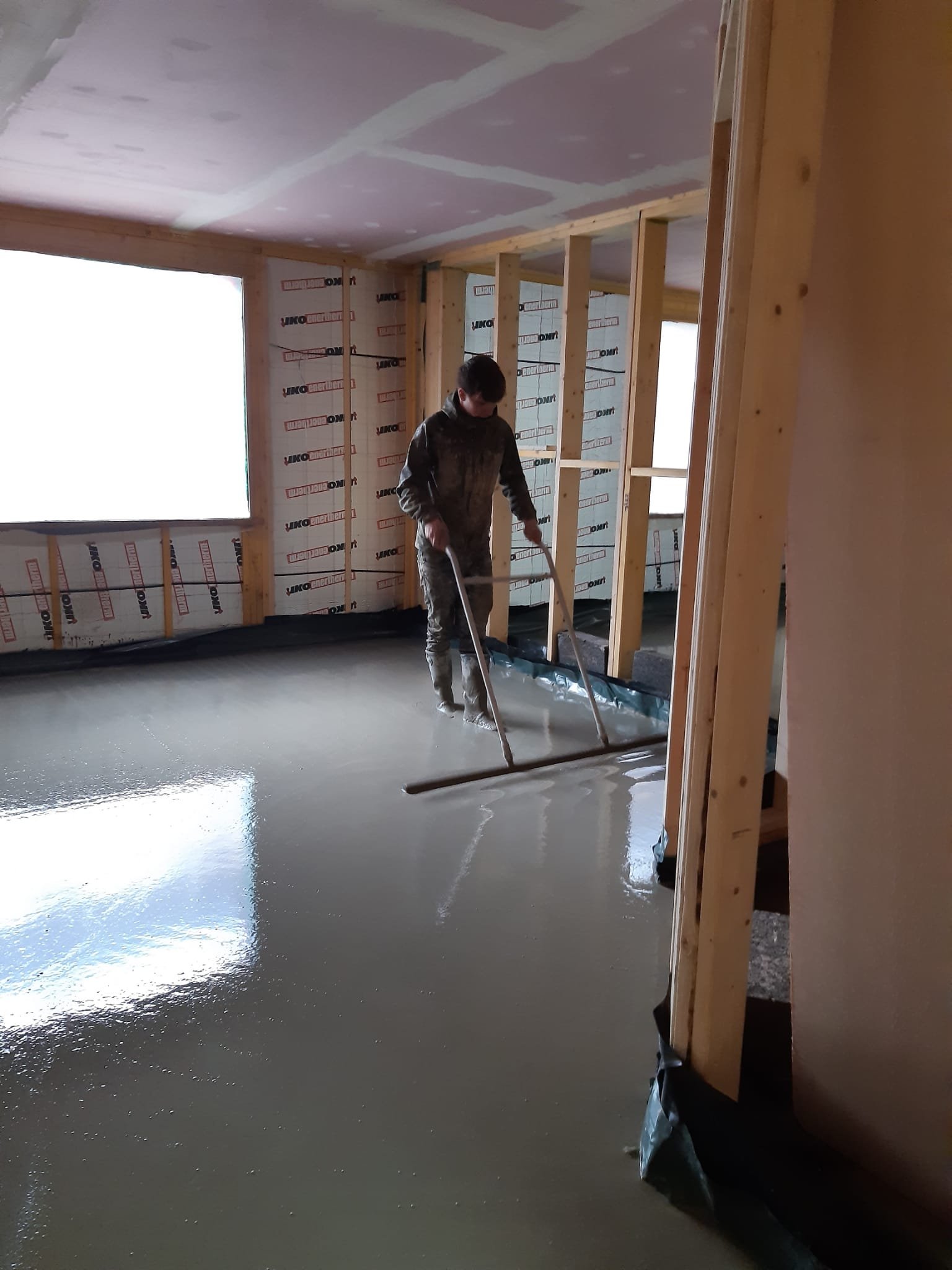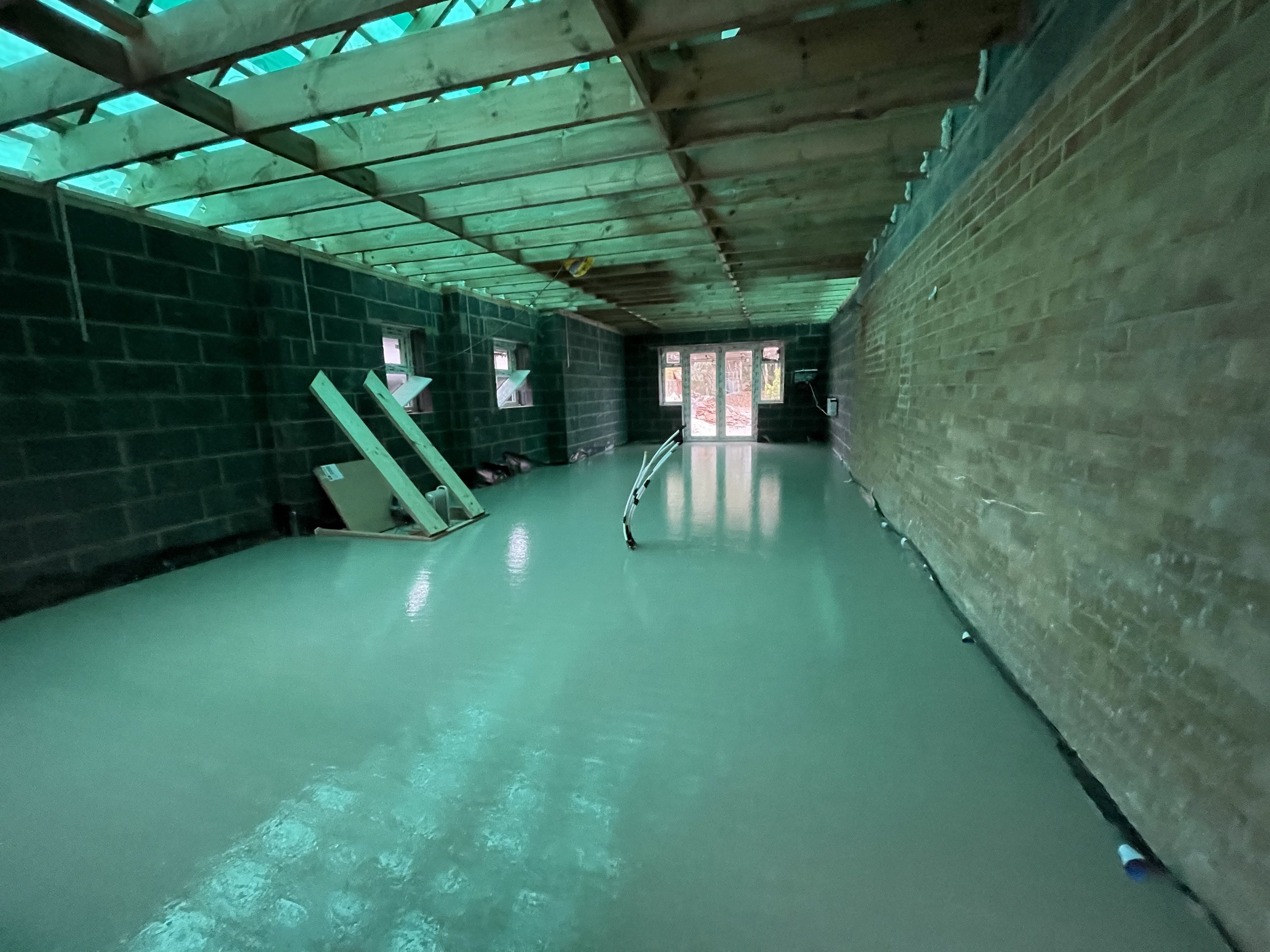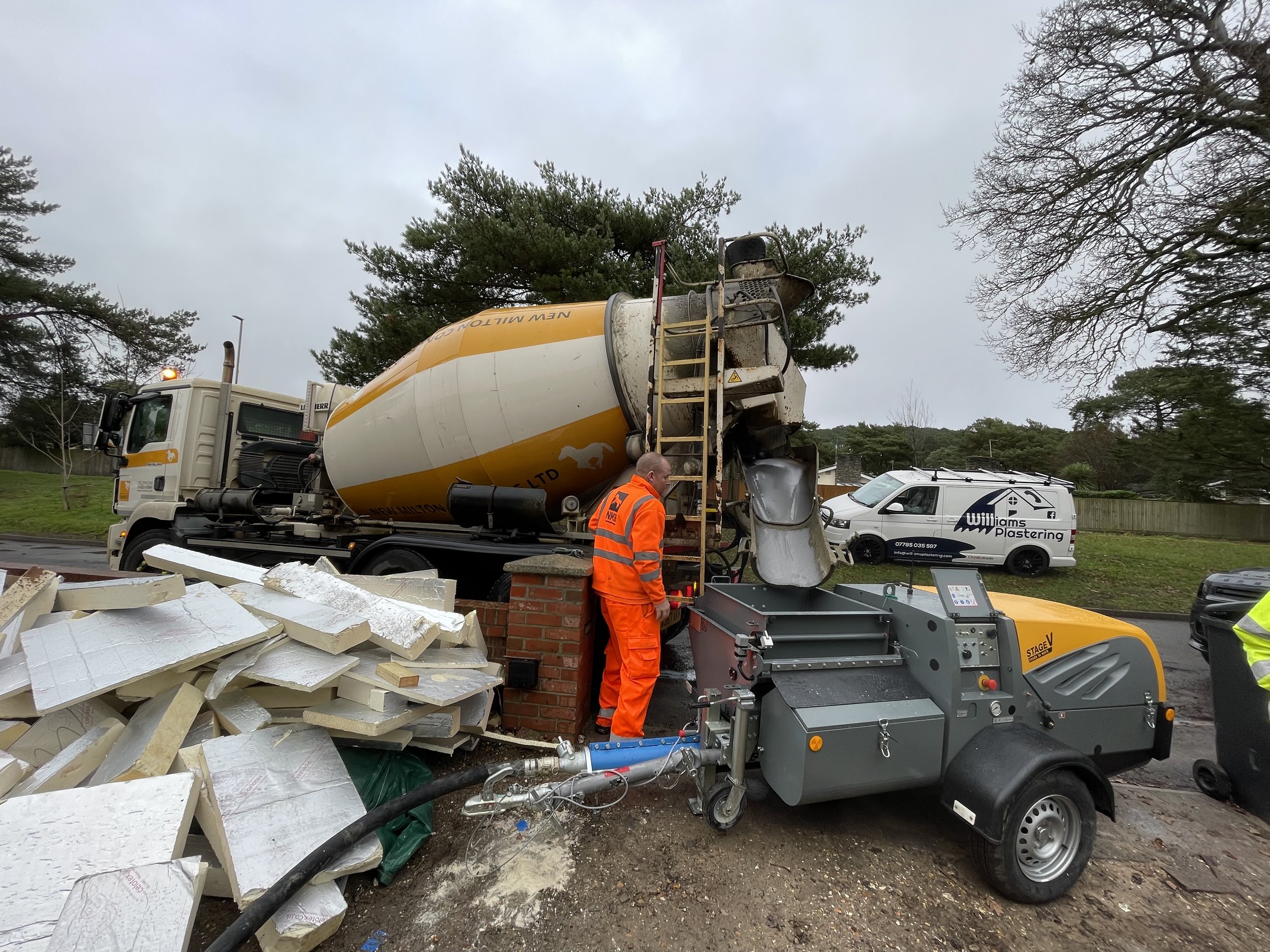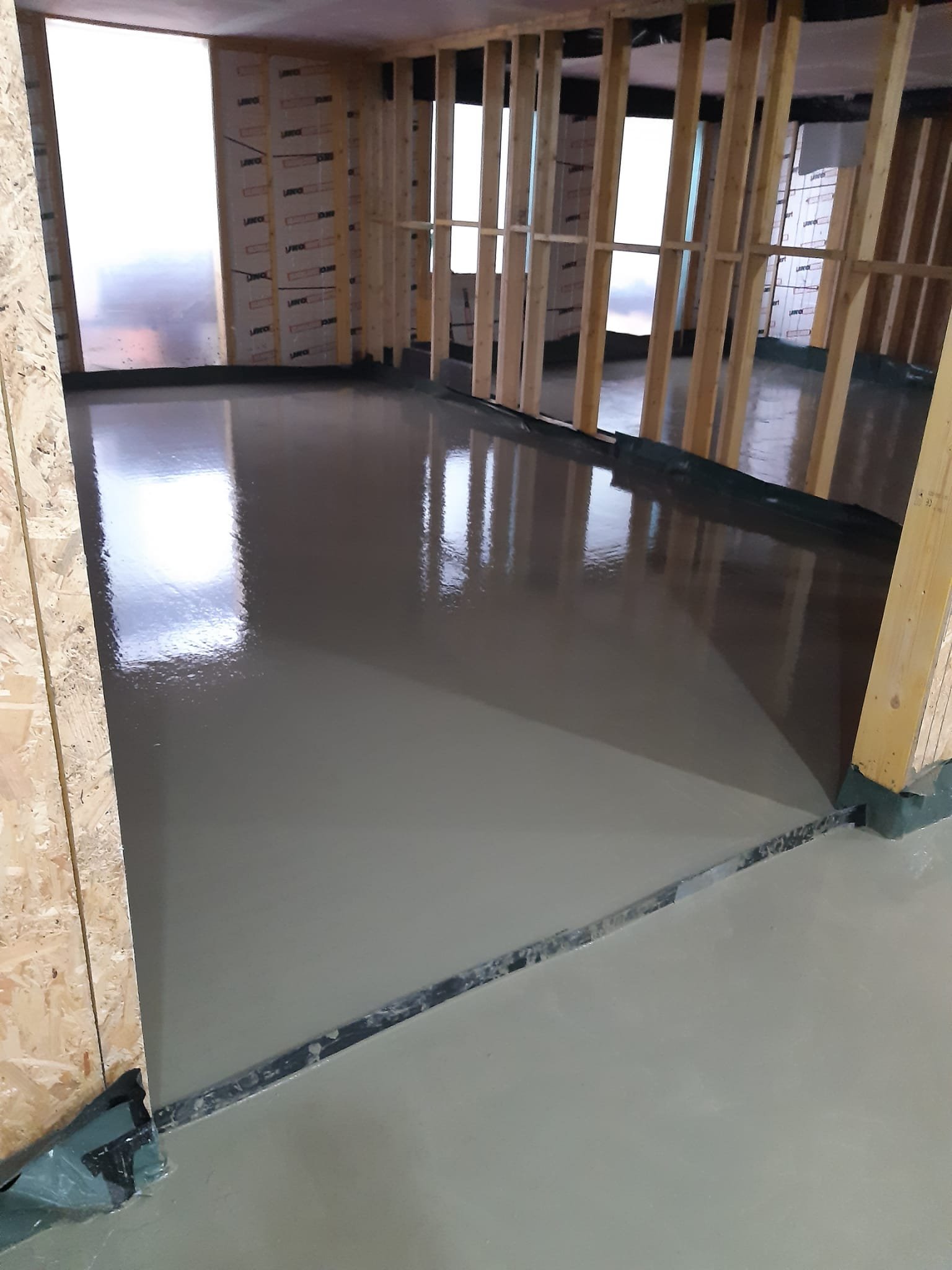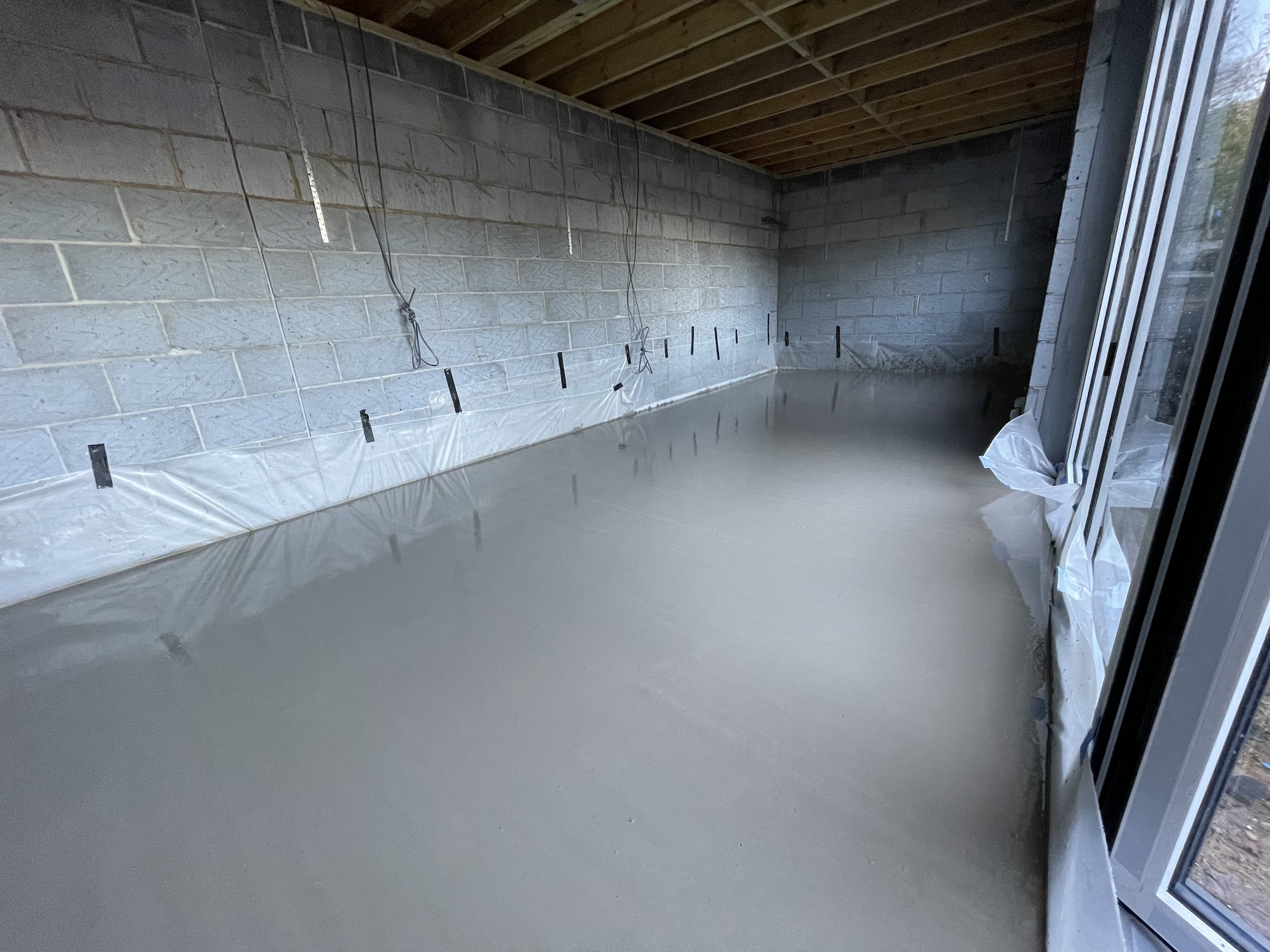
Liquid Floor Screed
What is liquid screed?
Liquid screed is fast overtaking traditional sand and cement screed to become the main flooring product to use for domestic and commercial projects.
It’s a thick liquid mix that is discharged from a mixing truck into our screed pump and then conveyed straight to the area to be covered. It’s then dappled using a dappling bar to remove any air and leave nice finish to receive subsequent floor coverings.
Once dried, the final floor covering can be laid on top.
Why use liquid screed?
Liquid screed floors have gained their popularity through being used with underfloor heating systems. They’re strong, durable and a cost-effective way to create a high quality floor surface that’s level and even. Liquid screed has low shrinkage and when installed correctly has a minimal risk of cracking. Using liquid screed is also ideal on large projects where a lot of screed is required to be placed in a short space of time. It requires significantly less man power than traditional methods.
Where can it be used?
Liquid screed is used in both domestic and commercial refurbishments or developments.
Due to its excellent thermal conductivity its the best option for use over underfloor heating. It is also great for laying new floors on top of old ones. The nature of the screed allows it to fill any gaps and cracks.
It particularly important to note that there are different types of screed for areas that are subject to extreme damp such as wet rooms and bathrooms.
How long does it take for liquid screed to dry?
This is entirely dependent on the conditions inside the building. It should be dry enough to walk on after 24 to 48 hours.
Anhydrite screeds can be force-dried sometimes by using the underfloor heating. Cement liquid screeds will need a certain time before the heating is turned on. It’s important to know which type of screed you have so it can be left to dry for the correct amount of time.


